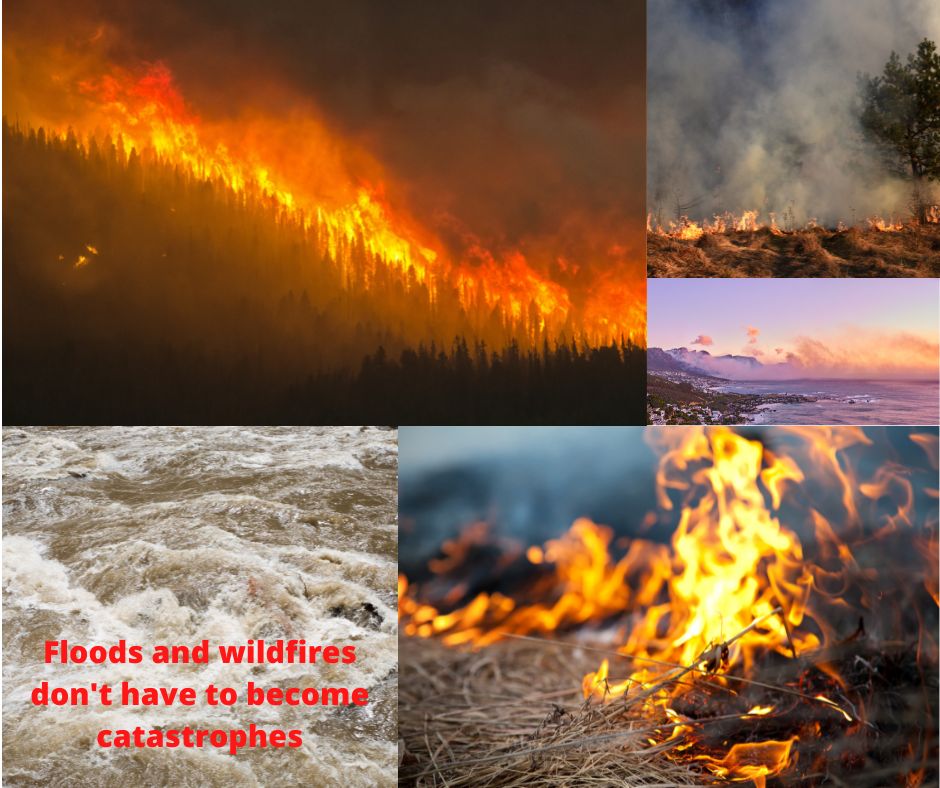
Source: AUN News
The years 2021 and 2022 saw record-breaking catastrophic disasters everywhere, from record-breaking heatwaves in British Columbia to wildfires in the Mediterranean, floods in Nigeria, and droughts in Taiwan.
A total of 10,000 people died, and $280 million in losses were reportedly sustained globally.
Making the connections
At first glance, disasters that occur in different places of the globe seem unrelated to one another. As the primary author and deputy director of UNU-EHS, Dr. Zita Sebesvari explained, “However, if you start investigating them in more detail, it rapidly becomes apparent that they are produced by the same factors, for instance greenhouse gas emissions or unsustainable consumption.
The research team behind the Interconnected Disaster Risks report looked “below the surface” of each disaster to pinpoint the factors that contributed to its initial occurrence.
For instance, soil erosion brought on by deforestation increases the vulnerability of the area to dangers including landslides, drought, and sandstorms.
An even deeper look reveals that common core causes that are more systemic in character, such as through economic and political systems, shape the drivers of disasters.
Deforestation is a result of unsustainable consumption habits and the prioritisation of commercial interests over environmental concerns.
The paper also cites inequalities in livelihood and development possibilities, human-caused greenhouse gas emissions, and colonial legacy as additional common root factors. These types of fundamental causes are common in disasters all around the world.
The links go beyond the underlying causes and motivators to include who and what is most at danger. Vulnerable populations continue to be the hardest struck by catastrophes in both human settlements and natural ecosystems.
“Let nature take its course”
However, because the answers are also interrelated, one sort of solution can be used in a variety of situations to lessen the effects of disasters around the globe. There are numerous ways to deal with a crisis, and they work best when combined to form a single, cohesive strategy.
For instance, the “let nature work” strategy makes use of nature’s power to reduce risks and avert catastrophes.
Prescribed forest burning can lower the likelihood of Mediterranean megafires, rehabilitating urban rivers and streams can lessen the effects of floods like the one that affected New York after Hurricane Ida, and bolstering early warning systems can improve risk prediction and communication.
Early warning systems could have prevented fatalities in three of the catastrophes examined in the study: the British Columbia Heatwave, the Tonga volcano and tsunami, and the Lagos floods in Nigeria.
Lead author Dr. Jack O’Connor says, “We need to acknowledge that they are interconnected, as are their answers, if we don’t want the disasters which we are currently witnessing to become the new normal.”
“We have the proper kind of solutions to better manage hazards and prevent them from happening, but we need to invest immediately in scaling them up and better understanding how they can be used in conjunction with one another.”
We are all a part of the answer
Not all solutions will be convenient for everyone. Some will need to distribute their resources more widely than they do now because to the transfer of resources among generations, nations, and groups of people with varied vulnerabilities, as well as the request for the inclusion of stakeholders who are rarely heard.
Governments, decision-makers, and the business sector are not the exclusive sources of the solutions. The researchers advise that they can also be done on a personal level.
“When we allow nature the space it needs to function, we can. By paying attention to where our food originates from and where it is purchased, we can encourage sustainable consumption.
In the case of a calamity, “we can cooperate to prepare our communities,” asserts O’Connor.
“The key is that each of us is a part of a greater collective activity that significantly contributes to genuine positive change. We’re all a part of the answer.
Analysis by: Advocacy Unified Network
